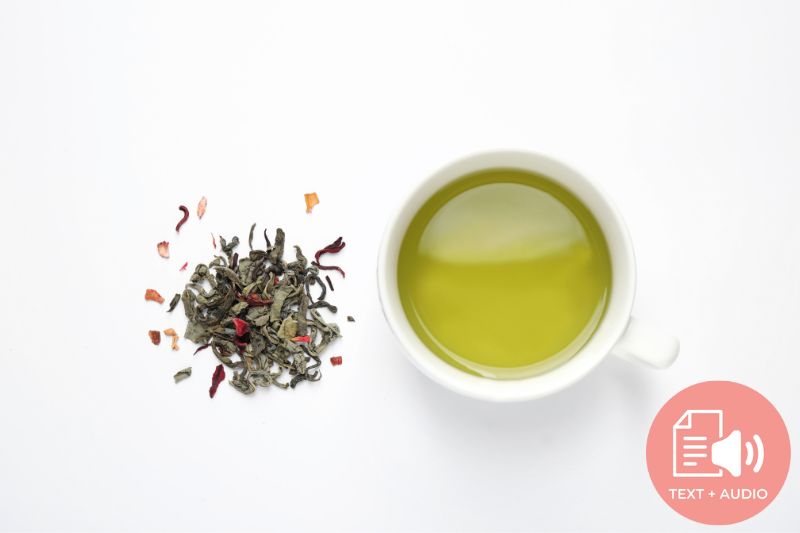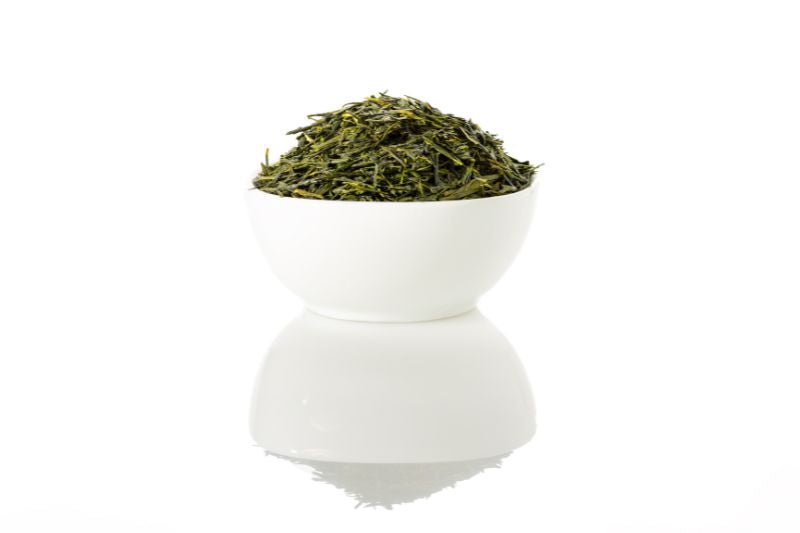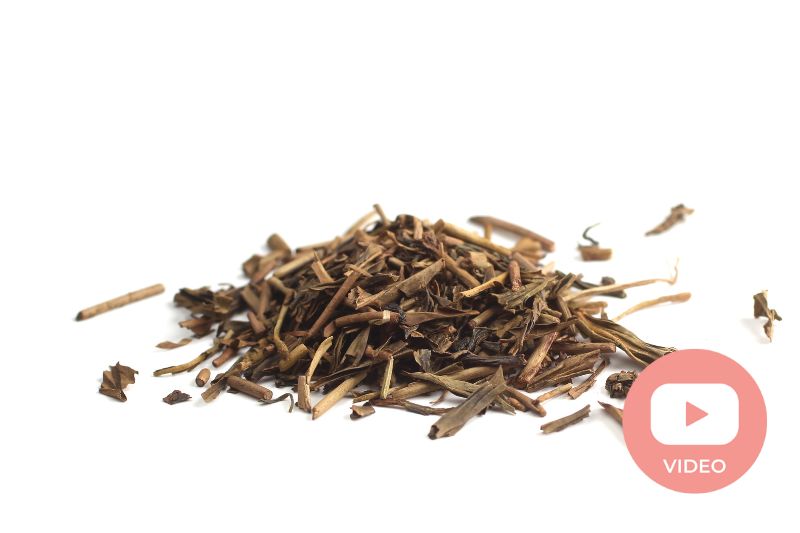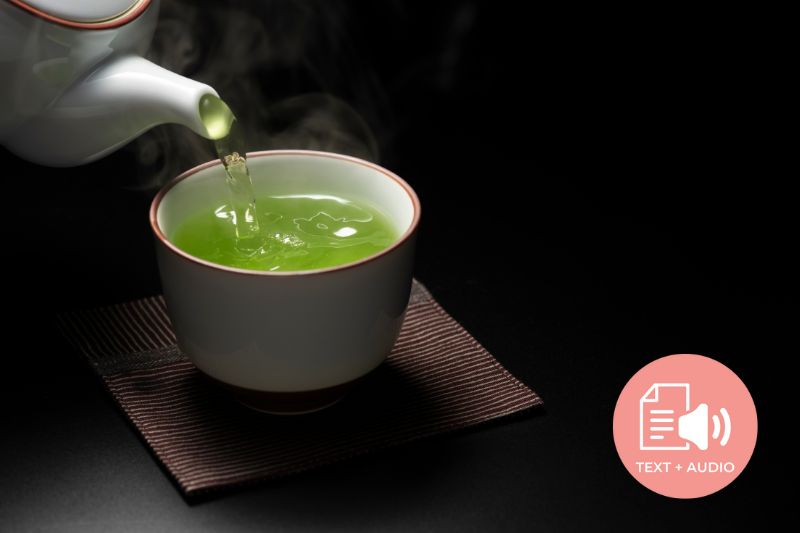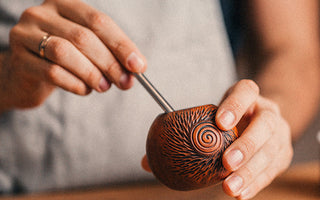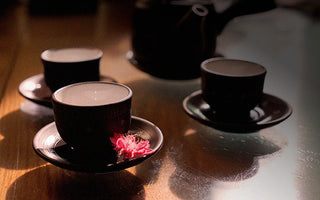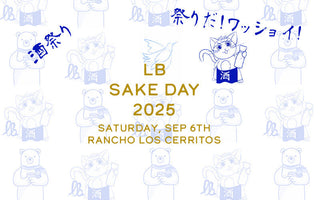Green tea products all come from the same Camellia sinensis species of plant. How come some green tea leaves produce a green brew while others create a brown one if this is the case? Even if the tea leaves are green, they can still make a different-colored drink.
As you probably already know, chlorophyll is responsible for the green color of the leaves, which, when picked, begin to ferment and oxidize, turning them brown. For green tea leaves to remain unfermented, they are steamed (the Japanese way) or pan-fired (the Chinese way) immediately after harvest. However, it must be noted that the pre-steaming or roasting steps may take some time, so oxidation may have already started by the time efforts to stop it begin. This means that green tea could produce varying shades of drink after steeping in hot water.

Which green teas create which brew colors?
As a rule, most green tea products result in a green or yellow-colored liquid. The most popular green tea in Japan is Sencha. Its leaves are a bright green before brewing, but the resulting drink after steeping is usually yellow or light green. Another popular Japanese green tea is Gyokuro. It is one of the highest-quality green teas out there, and it also produces a yellow drink.
On the other hand, powdered green teas like Konacha and Matcha create vivid green drinks. One must not be mistaken for the other. The difference between the two is that Konacha works like regular tea, while Matcha is more of a powder drink mix. Konacha may be in powder form, but it is not left in the water after brewing.
Hojicha is another Japanese green tea. It is considered quite medicinal, serving as an effective remedy for stomach and digestion issues. Notably, it always turns the water brown after steeping.

Meanwhile, Chinese green tea is typically grown in sunny fields. Full sunlight exposure causes oxidation and drying out, leading to brownish brews. The most popular Chinese green tea, Longjing, turns the water yellowish after steeping. Another Chinese variant is gunpowder green tea, which has dark green leaves and creates a light brown or golden brown brew.
What causes green tea to produce a brown brew?
Since the expectation is to drink green tea, it might be alarming for some to find themselves with a cup of brown liquid. However, there are green tea drinks that are meant to be brown in color. On the other hand, some are unintentionally brown but are still OK to consume. Notwithstanding these, some brown brews, unfortunately, do indicate a problem.
Considering that the green tea brews all come from green-colored leaves, how, then, do they end up being brown in color?
Oxidation
This process directly impacts the brew’s color because it changes the tea leaves’ chemical composition. The more oxidized the leaves are, the darker the brew is.

Now, oxidation allowed during processing of the tea is done specifically to produce a darker color. Still, consumers may also end up allowing oxidation by exposing their green tea to the air for too long.
Also, as mentioned, getting full sun leads to oxidation and drying out. This is why Japanese green tea is often grown in shady areas.
Brewing process
Green tea’s brewing time is three to four minutes. If you steep it longer than that, dark pigments are created, turning the drink brown.
Color of the leaves
There are different shades of green. Some leaves are so pale green that they create a yellow brew. Other leaves are so dark green that they almost look brown and do end up producing a brown-colored drink. Meanwhile, some leaves are tinged with orange or red, which may affect the brew's color as well.
Blends and additives
Sometimes green tea comes with other flowers and herbs. These additional elements do influence how the tea colors the water. Honey, in particular, affects the color of the tea besides aiding in its oxidation.

Final Thoughts
Green tea may not necessarily give you a green-colored brew, and that’s OK. Unless age, decay, or poor tea quality are the causes, a brown-colored brew should be OK to drink. It may come with certain properties that are not to your liking, such as a more bitter taste, but it doesn't have to be a cause for concern.
Get Free Bonus Books

Sign up for free to the Green Tea Club to get advice and exclusive articles about how to choose Japanese Tea, and tips, tricks, and recipes for enjoying Japanese tea.
About the author
Kei Nishida
Author, CEO Dream of Japan
Certification: PMP, BS in Computer Science
Education: Western Washington University
Kei Nishida is a passionate Japanese green tea connoisseur, writer, and the founder and CEO of Japanese Green Tea Co., a Dream of Japan Company.
Driven by a deep desire to share the rich flavors of his homeland, he established the only company that sources premium tea grown in nutrient-rich sugarcane soil—earning multiple Global Tea Champion awards.
Expanding his mission of introducing Japan’s finest to the world, Kei pioneered the launch of the first-ever Sumiyaki charcoal-roasted coffee through Japanese Coffee Co. He also brought the artistry of traditional Japanese craftsmanship to the global market by making katana-style handmade knives—crafted by a renowned katana maker—available outside Japan for the first time through Japanese Knife Co.
Kei’s journey continues as he uncovers and shares Japan’s hidden treasures with the world.
Learn more about Kei
